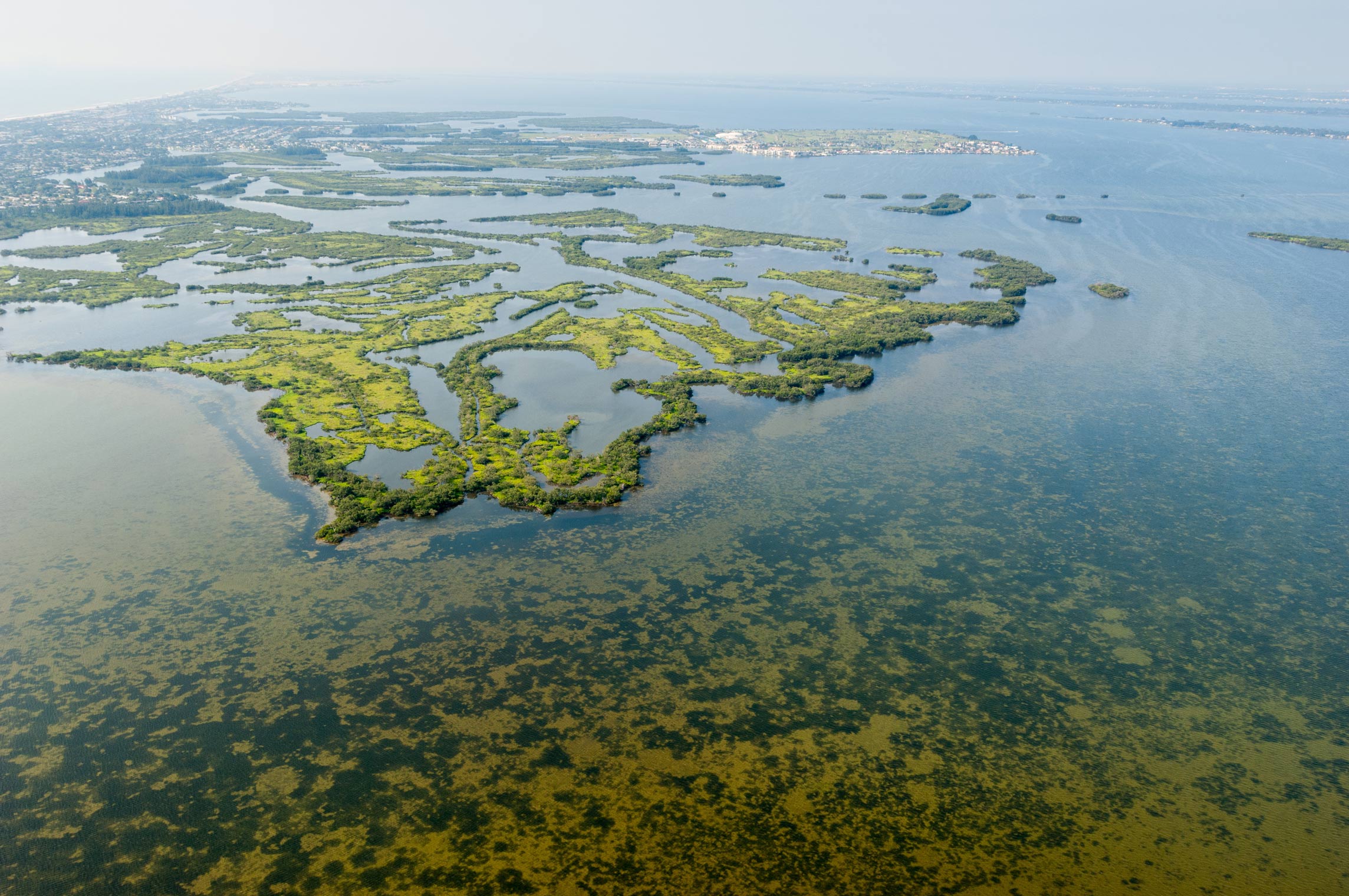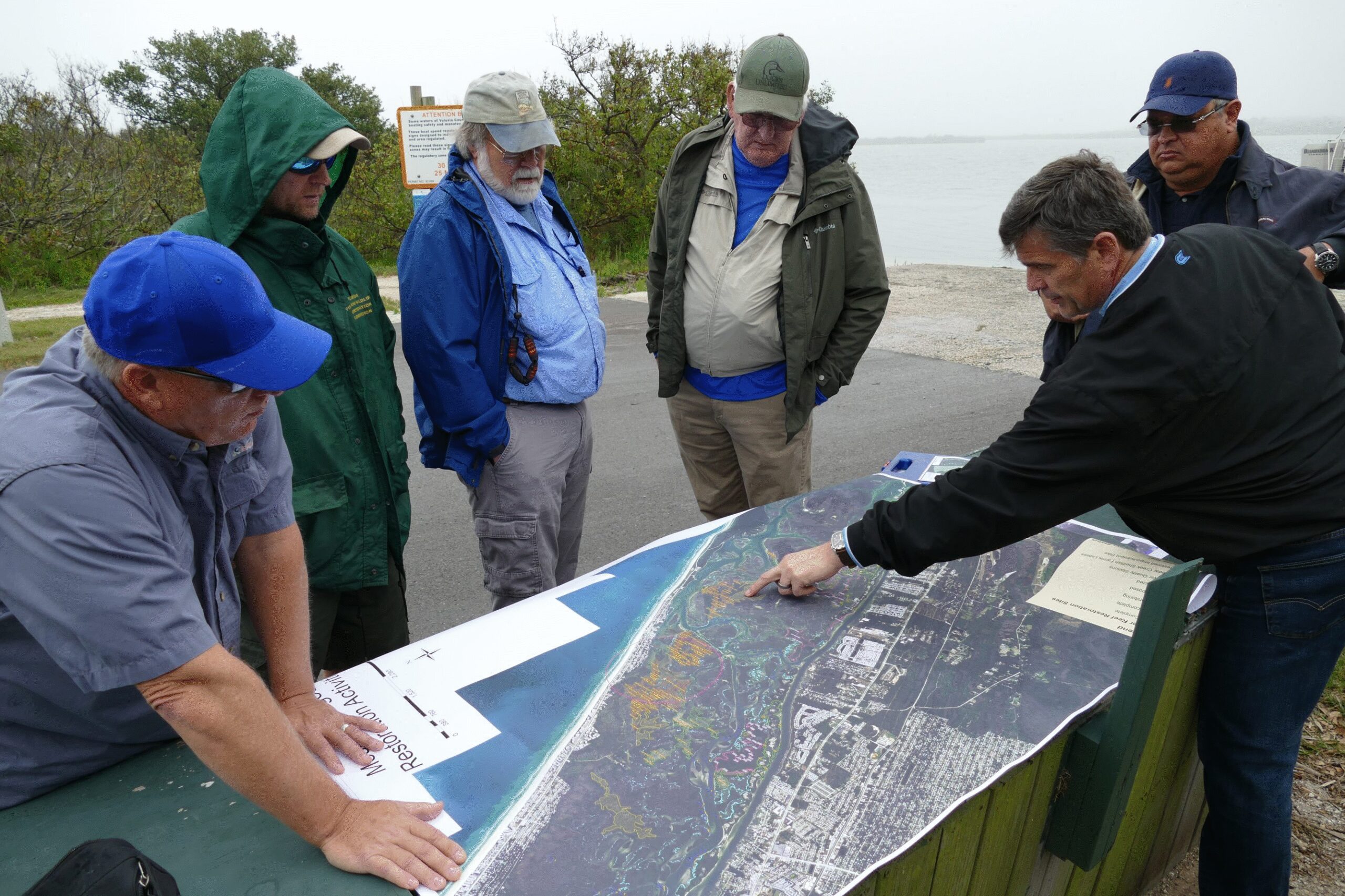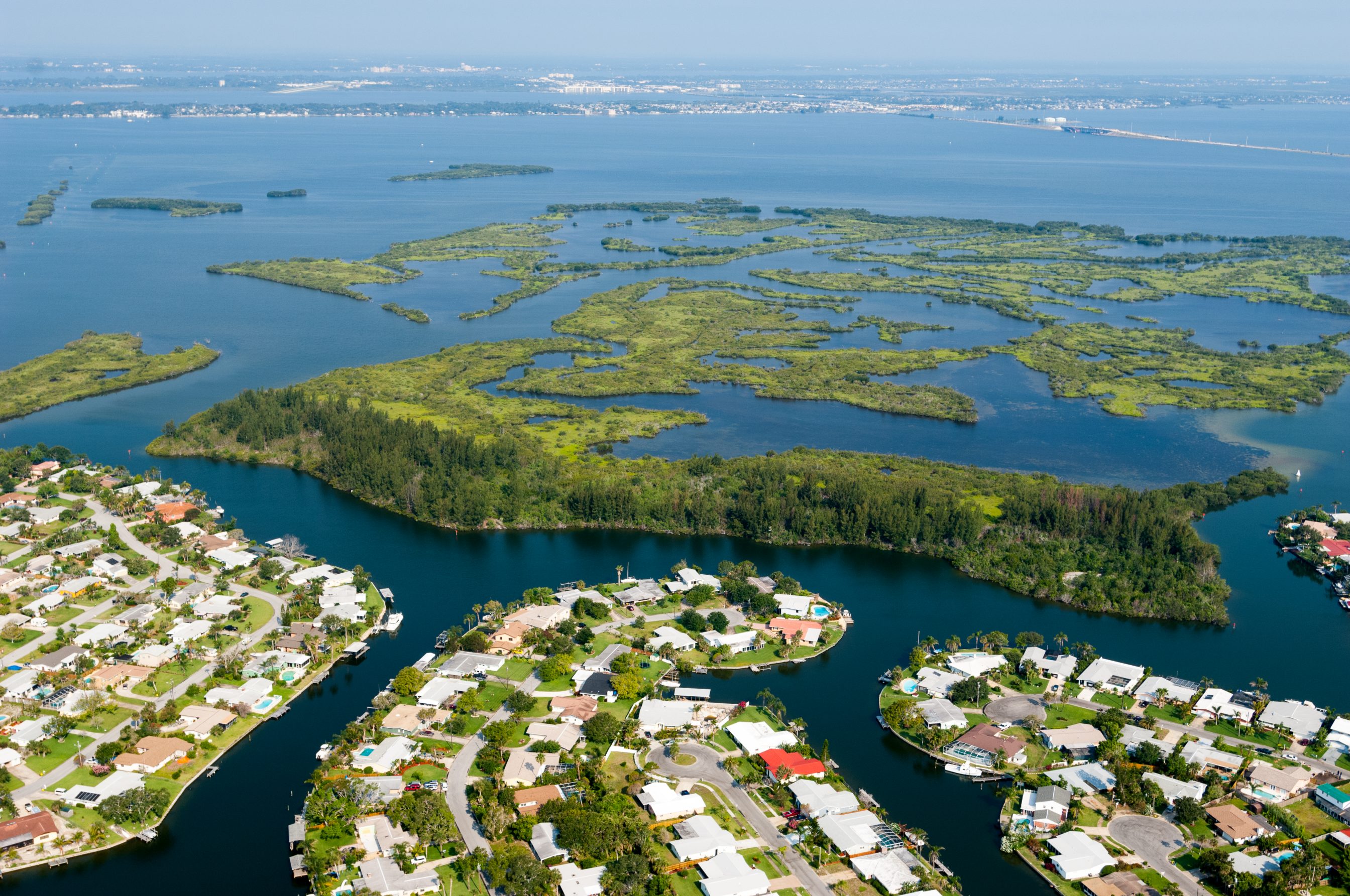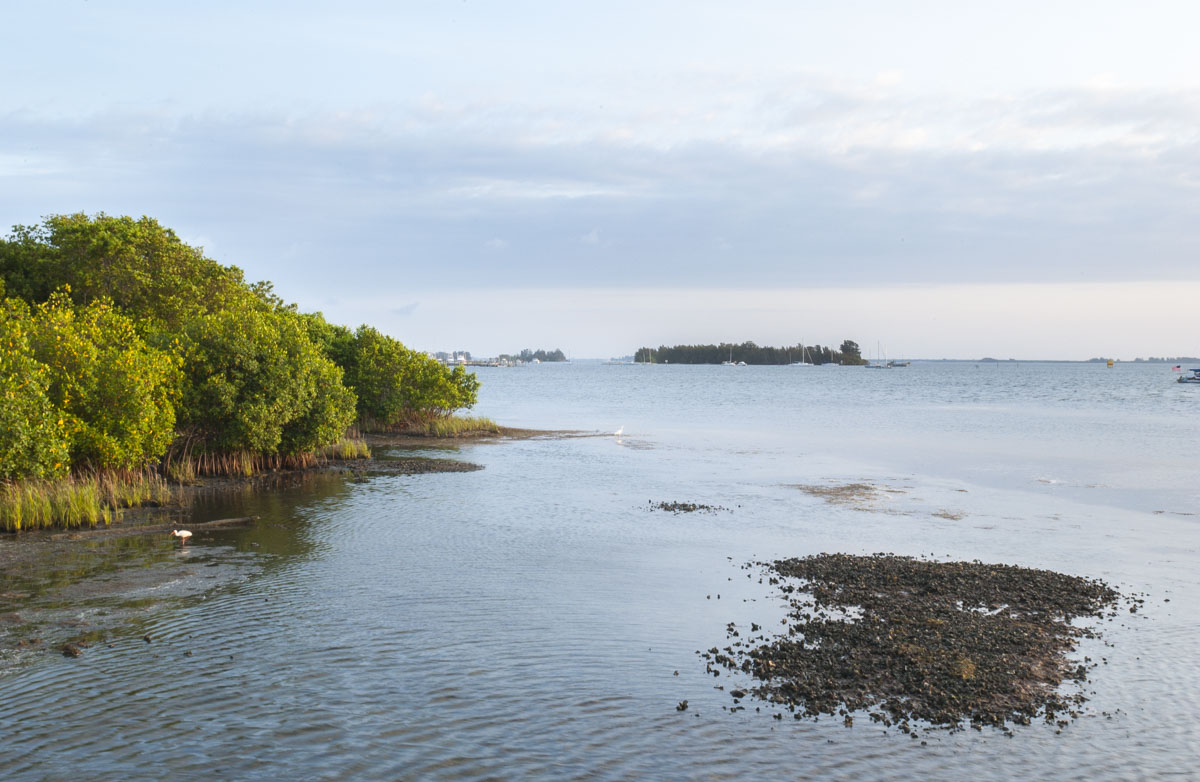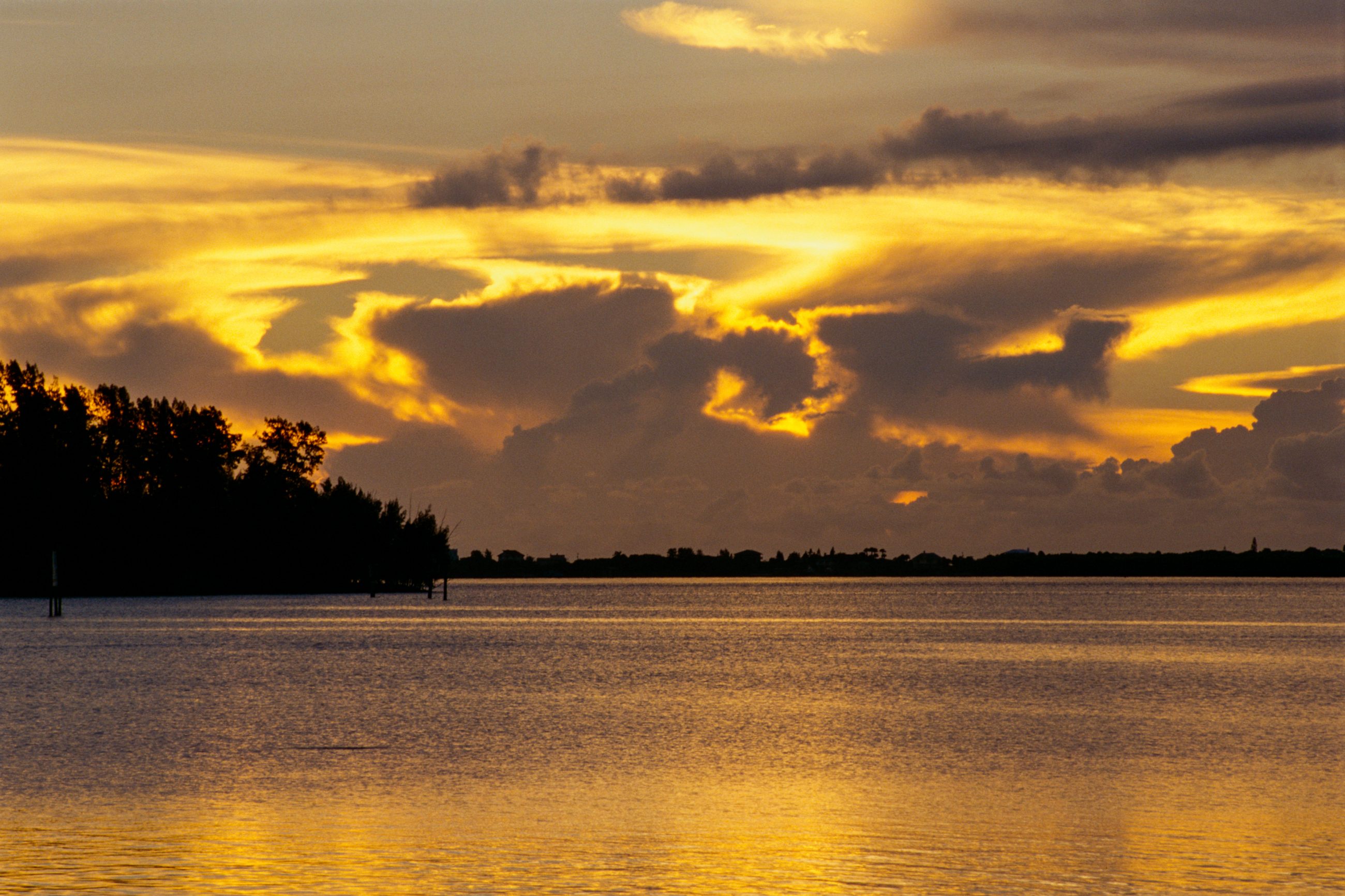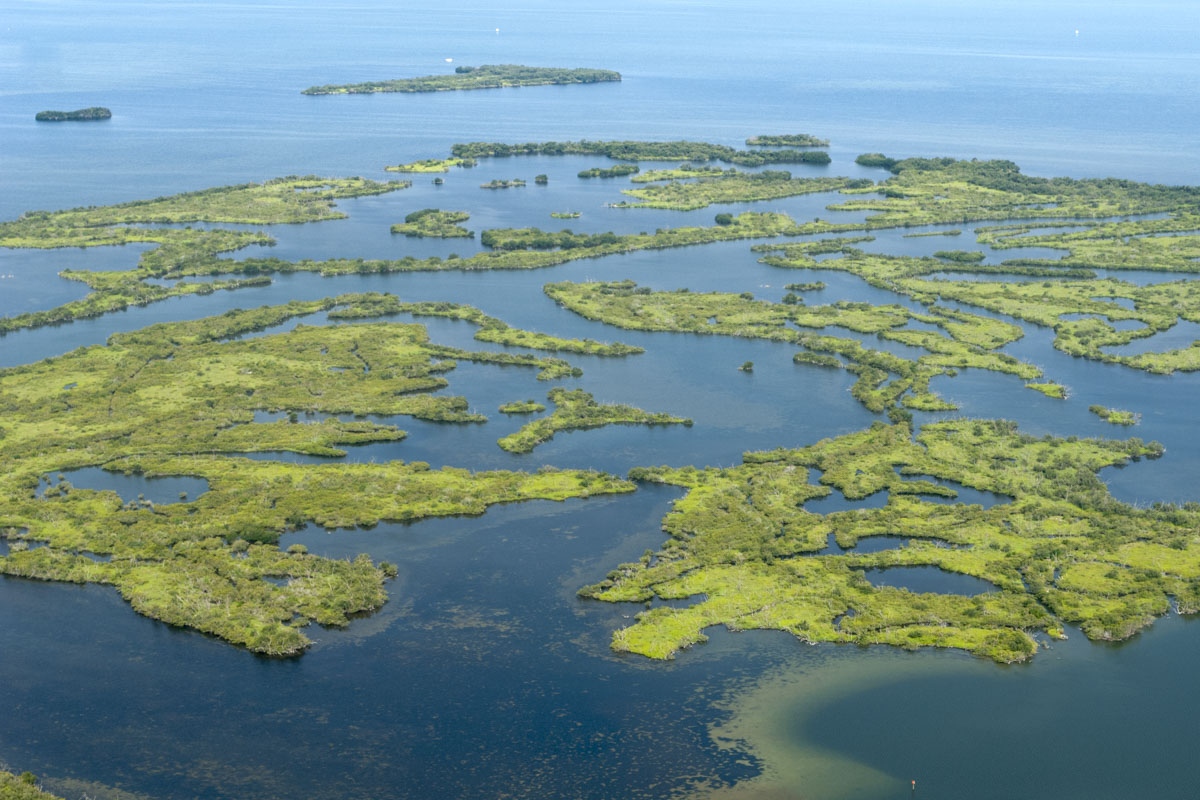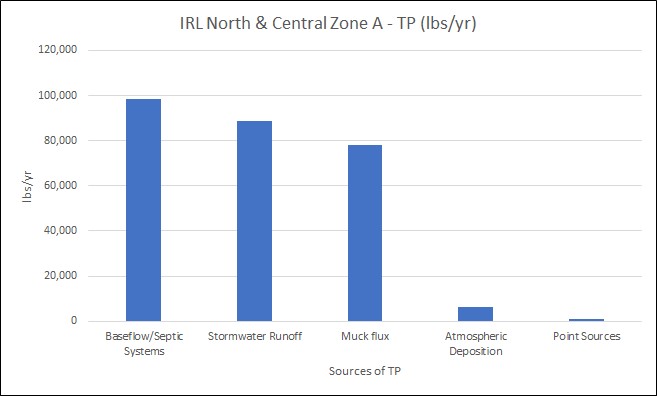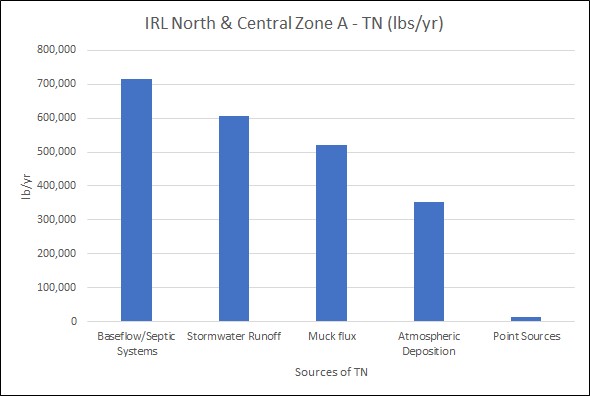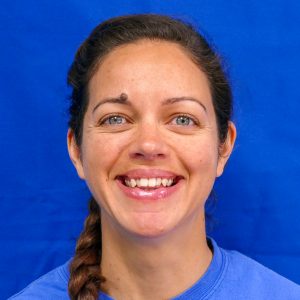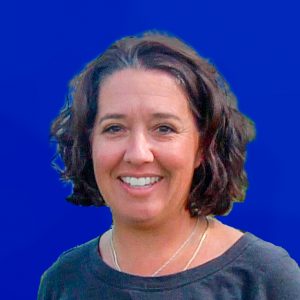We are naturally drawn to the beauty of the Indian River Lagoon — a 156-mile-long estuary that stretches from Ponce de Leon Inlet in Volusia County to the southern boundary of Martin County. The district is taking action in the form of in-the-ground projects to boost water quality and help restore the lagoon to what residents may remember from their childhoods.
Though algal blooms naturally occur in water bodies, the prolonged, widespread brown tide blooms in the lagoon — particularly in the central and northern reaches of the waterway — tell us that an overabundance of nutrients from manmade sources need to be reduced or stopped to help minimize the occurrence and intensity of algal blooms.
For many years, we’ve partnered with other agencies, local governments and water utilities to design and build dozens of tailor-made projects to restore degraded water bodies. We’ve also been working solo and with partners on projects that include coastal marsh restoration, redirecting wastewater discharges from waterbodies, stormwater collection and retention improvements, sanitary sewer collection improvements, and repairing or removing malfunctioning septic tanks.
Yes, the Indian River Lagoon needs our help, and water quality improvements won’t be apparent overnight. Decades of manmade impacts led us to where we are now but by relying on science, partnerships and projects together we can turn things around. The information on this page explains how we are striving to Renew the Lagoon.
Frequently Asked Questions
Brown tide refers to a type of algal bloom dominated by a marine, microscopic, single-celled alga in the group Pelagophyceae, known for its characteristic brown color. Two species of pelagophytes commonly responsible for harmful brown tides in the U.S. are Aureococcus anophagefferens and Aureoumbra lagunensis. The former has proliferated in the north and mid-Atlantic estuaries on and off since the mid-1980s. The latter first appeared in Laguna Madre, TX where it bloomed continuously from 1990 to 1997. It wasn’t until the summer of 2012 when A. lagunensis bloomed for the first time (in Mosquito Lagoon), attaining chlorophyll a concentrations of ~ 200 ug/L, a record high for the Indian River Lagoon. The University of Florida, the Florida Fish and Wildlife Conservation Commission (FWC) and Stony Brook University, in collaboration with the St. Johns River Water Management District, were the first to document this 2012 brown tide bloom in Florida.
Brown tide organisms are not known to cause human health concerns. However, these organisms can be harmful to ecosystems when present in high concentrations. They can cause a detrimental reduction in concentrations of dissolved oxygen, that can lead to shellfish and fish kills, and they can inhibit filter-feeding in grazer populations, including zooplankton and bivalves (such as oysters and clams). Studies have shown that the brown tide species Aureoumbra lagunensis can be noxious or toxic to some species of planktonic grazers, or simply harm them because they have low nutritional value. Clearance (feeding) rates in bivalves have been shown to be significantly reduced in the presence of brown tide in the Indian River Lagoon. The public can report fish kills or fish with abnormal behavior to FWC’s Fish Kill Hotline at 1-800-636-0511.
The location, timing and duration of algal blooms remain difficult to predict due to complexities associated with delivery of nutrients to the lagoon, uptake and cycling of those nutrients by various organisms, and interactions among organisms and with the environment. The lagoon has had algal blooms throughout its history, but the occurrence of blooms with negative effects has been increased by people’s activities. We can predict fewer detrimental effects if we reduce the availability of nitrogen and phosphorus, two nutrients needed in large quantities. Tens of millions of dollars in projects designed to reduce the availability of these nutrients have been completed by numerous partners, and many more projects are underway or planned. Sampling has documented localized improvements, such as a decrease in the flux of nutrients from muck after dredging in Turkey Creek (source: Impacts of Environmental Muck Dredging report prepared by Florida Institute of Technology for Brevard County). However, ultimate success will require the combined effects from many projects, with full restoration predicted to take at least fifteen years and cost more than four billion dollars (source: Impediments to Implementation of the Indian River Lagoon Basin Management Action Plans prepared by the East Central Florida and Treasure Coast Regional Planning councils for the Florida Department of Economic Opportunity). In short, decades of impacts brought us to where we are, and a turnaround in the lagoon will not happen overnight.
Some – not all – algae can produce toxins that can contribute to environmental problems and affect public health. Little is known about exactly what environmental conditions trigger toxin production. Over time, these toxins are diluted and eventually break down and disappear. Non-toxic blooms can also harm the environment by depleting oxygen levels in the water column and reducing the amount of light that reaches submerged plants.
The Florida Department of Health (DOH) recommends staying out of the water when a visible bloom is present and recommends not swimming or fishing in areas where algae is seen. More information on Public Health effects can be found here.
DOH takes the lead in determining if a harmful algal bloom presents a risk to public health. DOH issues appropriate health advisories when toxicity levels are higher, and DOH may also post warning signs when blooms affect public beaches or other areas where there is elevated risk of human exposure. FDACS also posts updates for shellfish harvesting areas potentially affected by toxic harmful algal blooms such as red tide.
People experiencing symptoms or illnesses should contact the Florida Poison Control Center at 1-800-222-1222.
Brown tide blooms in the Banana River Lagoon and northern Indian River Lagoon are not known to produce toxins that can be detrimental to human health. A species that is known to be toxic and that commonly blooms in the northern and central Indian River Lagoon in the late summer and fall months is Pyrodinium bahamense, well known for its bioluminescence that attracts night-time kayakers. This species of dinoflagellate produces a neurotoxin called saxitoxin that is harmful to humans when they consume certain fish or shellfish from an area experiencing a bloom. The red tide species karenia, another well-known toxic dinoflagellate common in Florida’s Gulf coast, prefers higher (sea water) salinities and is fortunately rarely found in high concentrations in the Indian River lagoon. Other potentially toxic species of phytoplankton can also occasionally bloom in the Indian River Lagoon, but to date, none of these have been directly implicated in adverse human health effects. All blooms, however, whether toxic or not, can cause significant ecosystem harm by depleting oxygen levels in the water column, negatively impacting food webs, or reducing the amount of light reaching submerged plants.
DEP and Florida’s water management districts frequently monitor Florida’s water quality, and routinely collect freshwater algal bloom samples as soon as they are observed as part of their routine monitoring. In addition, staff can be deployed to take additional samples in response to reported blooms – whether from a citizen, other response team agencies or other sources.
All algal samples are tested to identify the type of algae present. If the algae are a type that is capable of producing toxins, it is then tested to determine if it is producing toxin and if so, at what level. The toxins typically tested for include microcystin, cylindrospermospin and anatoxin-a.
Good wound care is the best way to prevent bacterial skin infections. Keep open wounds covered with clean, dry bandages until healed and don’t delay first aid of even minor, noninfected wounds like blisters, scrapes or any break in the skin. Avoid exposure of open wounds or broken skin to warm salt or brackish water, or to raw shellfish harvested from such waters. Wear protective clothing (e.g. gloves) when handling raw shellfish. If you’re in poor health, on medications, have liver disease or are immunocompromised – seek immediate medical attention for any cut or abrasion that occurs in marine waters or from a marine species. Seek medical help as necessary.
There is no sole source of nutrients to blame for algal blooms because all sources collectively contribute to the nutrient enrichment of the Indian River Lagoon. To achieve restoration all sources will need to be addressed.
DEP and the St. Johns River Water Management District (district) are committed to working with local communities to expedite and implement projects that improve water quality conditions and contribute to ongoing restoration of the lagoon.
Moving forward, we will continue to focus on restoration – efforts to improve water quality in the lagoon. These restoration projects are essential to reducing nitrogen and phosphorous levels, which can decrease the intensity and duration of algal bloom events.
Specifically, we will focus on identifying additional wastewater and stormwater projects to reduce the amount of nutrients going into the lagoon; dredge projects to remove muck that exists in the bottom of the lagoon, which also feeds algae blooms; and when areas of the lagoon are ready, projects to restore the oyster and seagrass habitat of the lagoon.
Recognizing that the health of the lagoon is vital to Florida’s environment, economy and quality of life, the department has identified the lagoon as a priority waterbody for restoration. To formally implement the projects and activities necessary to bring the lagoon back to health, the department adopted pollutant-reduction targets for nitrogen and phosphorus and established three restoration plans to address specific challenges in each section of the lagoon.
Sewage spills are one of many sources of nutrients that can be reduced via projects to improve systems that collect and treat wastewater. Large, intense and persistent algal blooms are unlikely to be the result of a single sewage spill, but each spill contributes to the loads available within a system.
Although reducing excess nutrient, freshwater and contaminant inputs to the lagoon remains critical to its long-term health, it is prudent to assess other ways to reduce the detrimental effects of algal blooms in the short-term, such as enhanced exchange with the ocean or enhanced circulation within the lagoon. Agencies and academics (Indian River Lagoon National Estuary Program, the district, DEP, and Florida Tech) are collaborating to evaluate ideas and options, including a pilot project to document benefits and impacts from enhanced flows of oceanic water into the Lagoon and conversion of causeways to high-span bridges.
Any effort to alter exchange or circulation will be complex and costly, and each effort should be based on rigorous and careful consideration of both benefits and risks. For example, projects that increase exchange or circulation to a level that keeps pace with the initiation and spread of detrimental algal blooms may be more expensive, less effective and riskier than projects that prevent blooms in the long-term by reducing nutrient inputs. For example, blooms have been recorded near existing inlets, and evaluations of exchange through the Army Corps of Engineers’ locks at Port Canaveral indicate that the average flow through this facility is too low to reduce the residence time of water substantially.
All partners will continue to explore options, with goals being the design, siting and funding of a pilot project.
Residents statewide can report algal blooms to the Florida Department of Environmental Protection (DEP) 24 hours a day, 7 days a week. Information can be reported online through a website at www.reportalgalbloom.com, as well as through a toll-free number at1-855-305-3903.
To report fish that are either dead or in poor physical condition, residents should contact the Florida Fish and Wildlife Conservation Commission’s (FWC) Fish Kill Hotline at 1-800- 636-0511.
DEP collects detailed information such as location, description and size of the bloom. The reports are then evaluated and prioritized for inclusion in sampling plans based on severity of the bloom and potential for human exposure. The reports are also shared with appropriate collaborative agencies to ensure an effective and efficient response.
DEP, FWC and Florida’s water management districts frequently monitor Florida’s water quality, and routinely collect algal bloom samples as soon as they are observed as part of this effort. In addition, staff can be deployed to take additional samples in response to reported blooms – whether from an individual, other response team agencies or other sources.
Meet our lagoon experts
Staff expert is nationally recognized for wetlands restoration
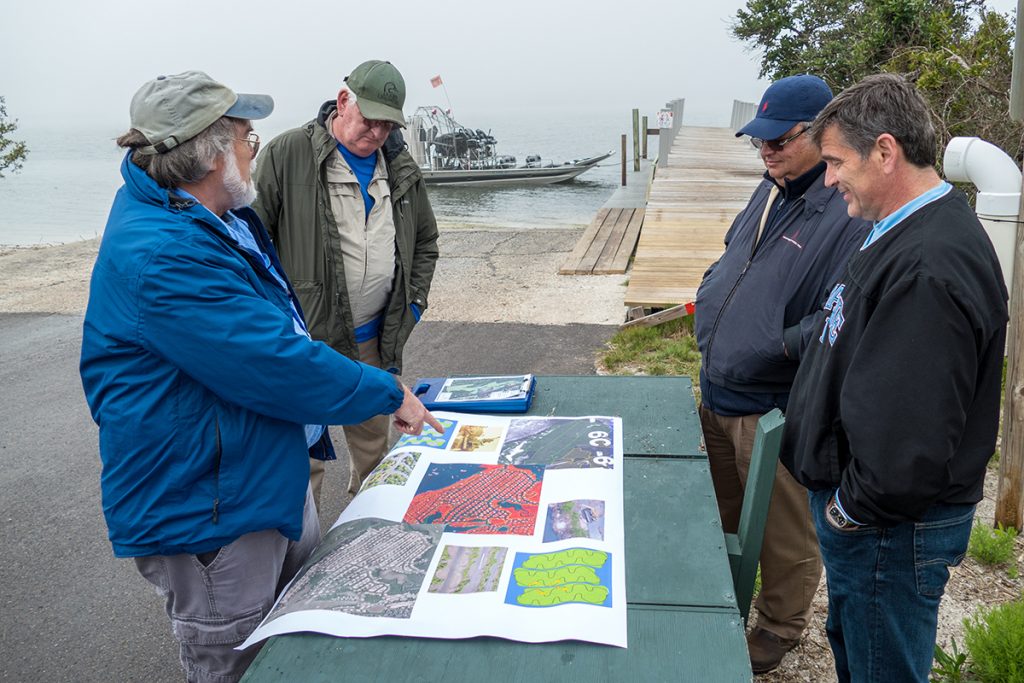
Despite all the challenges facing the Indian River Lagoon, one of its bright spots is the ongoing movement to restore the estuary’s coastal wetland. If you’re lucky enough to witness a restored area brimming with grasses, mangroves and nearby oysters, chances are Ron Brockmeyer was involved.
Brockmeyer is an environmental scientist for the district, and he has been nationally recognized for restoring coastal wetlands in Indian River, Brevard and Volusia counties. In 2012, he received the National Wetlands Award during a ceremony held in Washington, D.C.
Brockmeyer says he spends much of his time pushing paper, writing grant applications and bringing potential funding partners together, but on rare days he snatches an opportunity to work out in the field to help see projects through.
“My work includes development and piloting of new methods, as well as implementing well-established methods as suitable sites become available,” he says. “I also evaluate methods and projects over time to ensure success and identify future improvements.”
Since joining the district in 1994, Brockmeyer has remained focused on bringing life to restoration projects where success is moving toward positive long-term trends in the quality of the lagoon’s water and habitats.
“Many habitats associated with the lagoon have been impacted by people,” Brockmeyer says. “A healthy, fully functional lagoon will depend on restoration and remediation, along with avoidance of additional impacts. Wetland and oyster restoration play a role in these processes.”
Scientist has years of experience with lagoon seagrasses
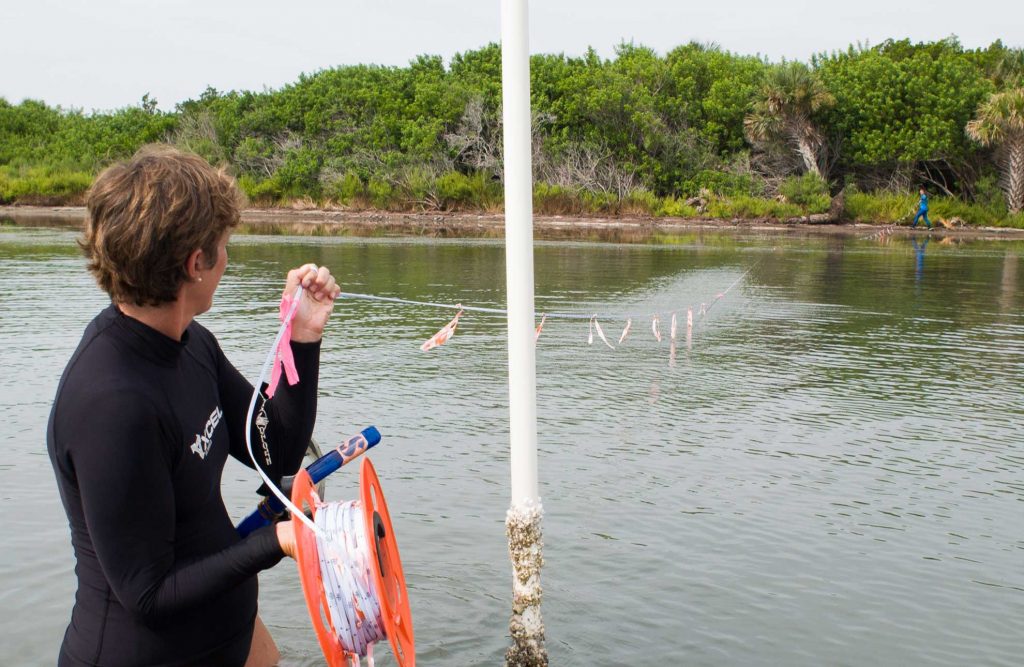
If you’re a member of the scientific community whose focus is the Indian River Lagoon, chances are you know Lori Morris.
Morris, an environmental scientist with the St. Johns River Water Management District, has, as she puts it, “crawled along the bottom of most of the lagoon during the past 25 years.”
When she joined the district in 1992, she spent more time underwater than she does these days, but her accumulated knowledge helps her visualize the condition of areas in the lagoon based on the constant flow of field data she receives.
“My favorite days are when I get to go in the field,” says Morris, who has a bachelor’s degree in geology from the University of North Carolina and a master’s degree in marine science from the Virginia Institute of Marine Science at the College of William and Mary. “However, there is a team of people who are out there collecting data on my behalf. Therefore, my typical day is left to ‘swimming’ through data in my office. I am one of the many people responsible for managing and analyzing all the seagrass data for the Indian River Lagoon.”
Seagrasses are an indicator of the health of the lagoon and they are recognized as critical habitat in the Surface Water Improvement and Management (SWIM) Plan, several Basin Management Action Plans and the Comprehensive Conservation and Management Plan of the Indian River Lagoon National Estuary Program, Morris explains.
“The district is the primary agency monitoring seagrass and, subsequently, the successes of these statewide and federal programs,” she says. “I feel extremely honored that I’ve been given the responsibility to maintain and analyze this valuable dataset…I truly hope I’ve given it the respect it deserves.”
Her office is the Indian River Lagoon
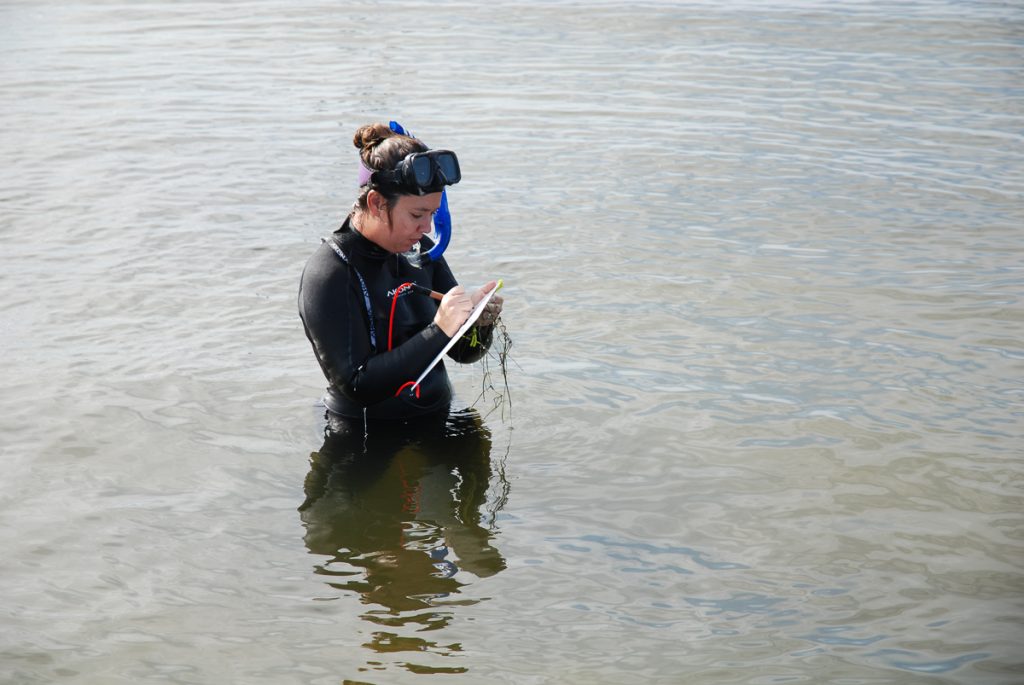
Meet Lauren Hall, who has spent so much time in the Indian River Lagoon it’s a wonder she hasn’t grown gills.
Hall is an environmental scientist with the St. Johns River Water Management District. Her job: to capture the pulse of the 156-mile-long Indian River Lagoon by monitoring the ever-fluctuating seagrass beds lining the lagoon floor along its east and west shorelines.
Hall, along with other district scientists and assisting agencies, monitors 97 sites stretching from New Smyrna to Jupiter Inlet.
“We’ve been collecting field data since 1994, so we have a 24-year database on the condition of the lagoon’s grasses,” Hall says. “It’s a huge interagency endeavor, which is good because we have a limited amount of time for sampling, especially on short winter days. Without our partners’ cooperation, we couldn’t get it all done.”
Seagrasses took a severe hit in 2011 when protracted blooms of single-celled algae prevented sunlight from reaching seagrasses for months. This shading resulted in the loss of 47,000 acres of seagrass. Seagrasses are important to the ecology of the lagoon due to their ability to trap and stabilize sediment, produce food for manatees and sea turtles, and provide a habitat that shelters fish and other species.
“Monitoring seagrasses is as important now as ever,” Hall says. “We need to know which former seagrass beds remain denuded or where new growth is appearing. When we see an increase in seagrass percent cover, it’s telling us that the lagoon’s water quality is improving — and that’s a good thing.”
How are seagrasses faring today? Trends vary throughout the estuary.
“Following the algal blooms of 2011–12, we saw modest gains in seagrass in 2013–15,” Hall says. “Unfortunately, another phytoplankton bloom appeared in 2016 and impacted those gains. All along the lagoon, people are working to address the causes of algal blooms, and we’re hoping those efforts lead to a rapid recovery by seagrass beds.”
Environmental scientist closely watches the lagoon’s health
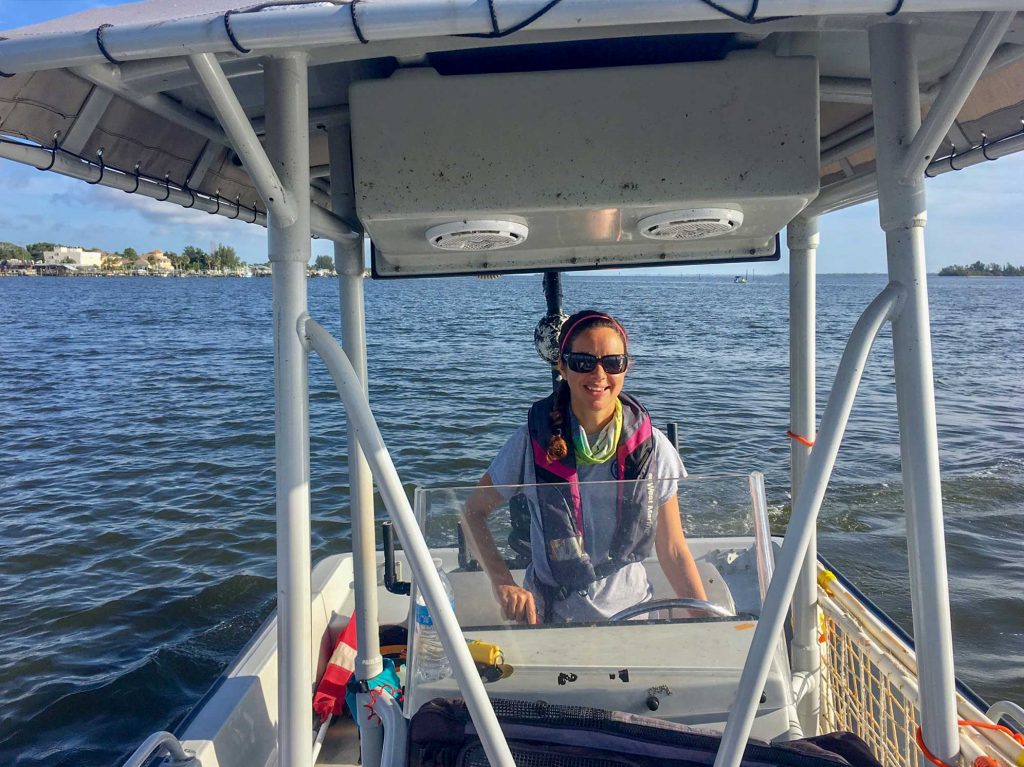
Melissa Adams is among the St. Johns River Water Management District’s team of environmental scientists who has her thumb on the pulse of the Indian River Lagoon.
Along with the rest of the district’s staff in the Bureau of Water Use Regulation, Adams collects routine water quality and algal bloom samples, deploys and maintains continuous water quality monitoring instruments, and conducts biannual seagrass monitoring. In addition to those team tasks, she also is responsible for seagrass monitoring data quality assurance and entering that data into the district’s database.
“Quality assurance ensures the overall precision and accuracy of our data,” Adams says. “Seagrass and water quality monitoring provide our agency and others a scale with which to measure their efforts to improve the system. Continuous monitoring in the lagoon gives scientists and decision-makers the opportunity to see real-time, fine scale data and how the system responds to different drivers and stressors.”
Adams is intimately familiar with the estuarine waters, having joined the district 10 years ago as a contractor and becoming a full-time employee five years later. She enjoys sharing her work with others in her field. In 2010, she presented a film she created about her work at the Beneath the Waves Film Festival during the Benthic Ecology Conference in Wilmington, NC.
Adams says she realizes that the lagoon’s condition is in the public eye and that people want to see water quality improvements as soon as possible. As a scientist, she understands that the lagoon is a complex waterbody and that changes may be slow in coming to some areas.
“It took decades for the lagoon to reach its current condition and it won’t improve overnight,” she says. “But we should continue to be diligent about minimizing our effects on it.”



